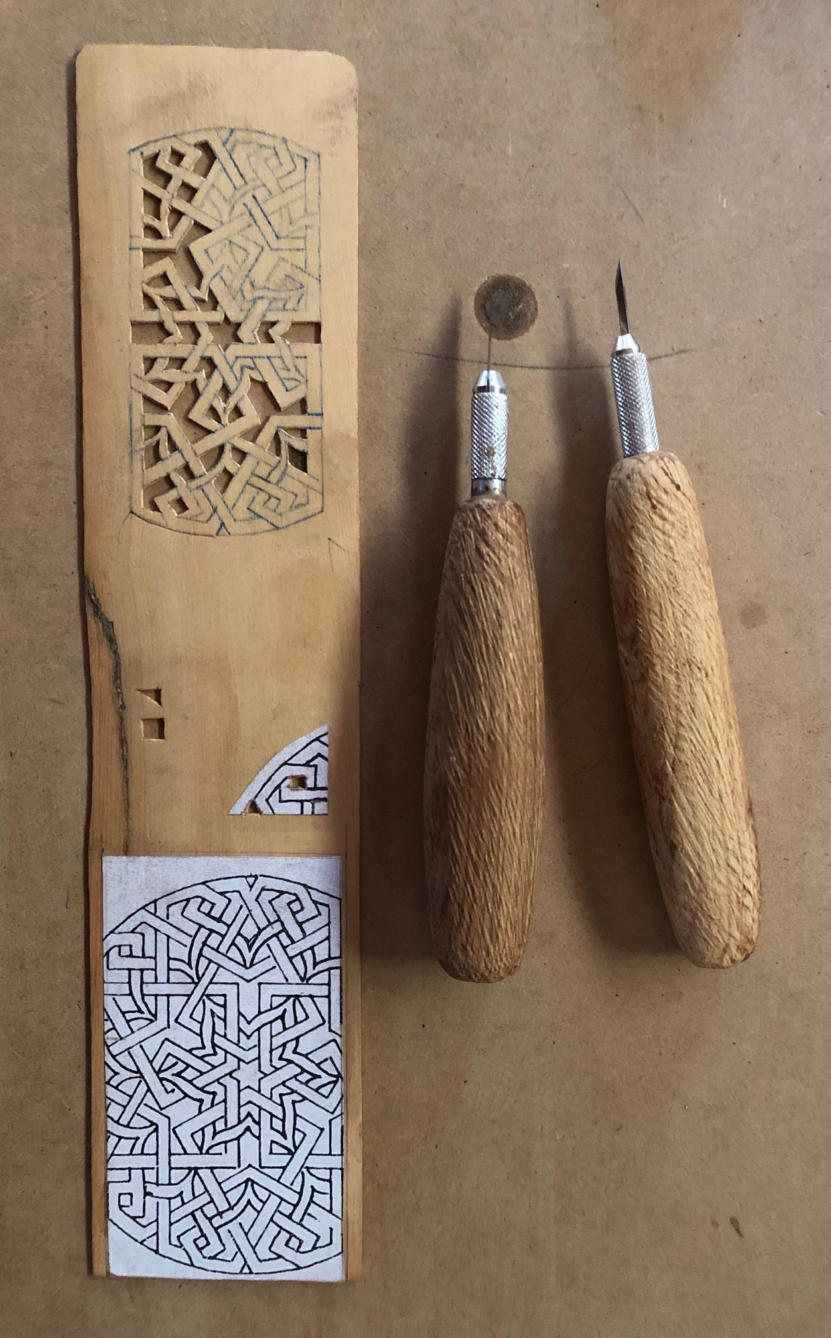I have been trying my hand at making a Lute Rose. My aim is to reach an acceptable level of competence before tackling the soundboard.
The Rose is a circular decoration in the soundboard, cut with a thin knife or scalpel. One or other decoration has no bearing on the quality of sound; it is simply a tradition.
This is a tricky and challenging business. Fortunately, I have my friend Tim Guster as Consultant. I visit his workshop from time to time, in search of advice or encouragement or comfort -as the case may be.
Tim is a master craftsman and luthier. You can see his work here:
I came away from my last visit armed with scraps of King William Pine and European Spruce. Both woods are suitable for soundboards; Spruce is the traditional material.
At the moment, however, I am experimenting with a scrap of Huon Pine, planed and scraped to one millimetre thickness. After the basic decoration is completed, I will use a tiny chisel to create the relief surface.
Not so easy.
I am hoping that practice does, indeed, make perfect – assuming, of course, the practice involves correct technique. Otherwise, I will be merely acquiring yet another bad habit….

Beautiful fine work Chris, nice to see the cartoon you’re working from … it has Islamic qualities
You are quite right Lucy: there is definitely an Islamic influence – or at the least, we could say that it is a design intended by Renaissance makers to convey a Middle Eastern ‘aesthetic’. This is the original Rose used by George Gerle in about 1580; my lute plans are based on the Gerle model. The Lute belongs to the (Arabic) Oud family of stringed instruments.
Clearly you have infinite patience, an essential quality to cultivate such skill.
Beautiful design, will that be on final product?
Thanks Ian. Patience, or stubbornness: I expect the net result is the same. My lute plans provide three Rose options: this is the one I prefer. It is the Rose used in the original Gerle model (1580). I should add that there are plenty of straight lines in the design, and that suits my level of competence….
Yes, Christopher, practice makes perfect except when fatigue comes into play. Take care and pace yourself where necessary.
Your cartoon looks slightly Celtic to me, as in knots, as well as Islamic. A blend showing different influences at the time.
Thanks Sally. Yes, I guess it does have some Celtic elements. But it’s chief inspiration is Islamic: the transition from Oud to Lute was still alive in the minds and hands of the makers.
I have included my website address.